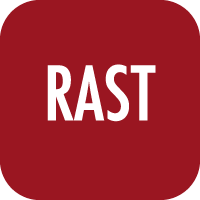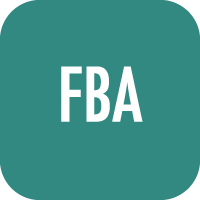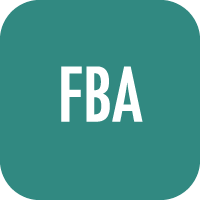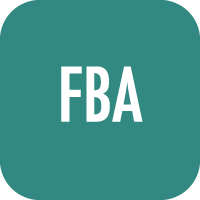Motivation: Nutrient and contaminant behavior in the subsurface are governed by multiple coupled hydrobiogeochemical processes which occur across different temporal and spatial scales. Accurate description of macroscopic system behavior requires accounting for the effects of microscopic and especially microbial processes. Microbial processes mediate precipitation and dissolution and change aqueous geochemistry, all of which impacts macroscopic system behavior. As `omics data describing microbial processes is increasingly affordable and available, novel methods for using this data quickly and effectively for improved ecosystem models are needed.
Results: We propose a workflow (`Omics to Reactive Transport – ORT) for utilizing metagenomic and environmental data to describe the effect of microbiological processes in macroscopic reactive transport models. This workflow utilizes and couples two open-source software packages: KBase (a software platform for systems biology) and PFLOTRAN (a reactive transport modeling code). We describe the architecture of ORT and demonstrate an implementation using metagenomic and geochemical data from a river system. Our demonstration uses microbiological drivers of nitrification and denitrification to predict nitrogen cycling patterns which agree with those provided with generalized stoichiometries. While our example uses data from a single measurement, our workflow can be applied to spatiotemporal metagenomic datasets to allow for iterative coupling between KBASE and PFLOTRAN. Live, interactive models, which incorporate the results from this narrative into a PFLOTRAN simulation, are available (without login) at https://pflotranmodeling.paf.subsurfaceinsights.com/pflotran-simple-model/.
First, we use the Import GFF3/FASTA file as Genome from Stagine Area to import our genomes of interest into the narrative.
Four nitrogen cycling MAGs from the genome dataset were chosen to represent key parts of the nitrogen cycle. We chose the mopst complete genome representatives for each group. Each nitrogen-cycling genome was filtered to remove contigs <2500bp.
This step was driven by an ammonium oxidizing archaea classified by GTDB-Tk as a member of the family Nitrososphaeraceae within the genus TA-21 (previously within the Phylum Thaumarchaeota)

| Created Object Name | Type | Description |
|---|---|---|
| Nitrososphaeraceae.genome | Genome | Imported Genome |

| Created Object Name | Type | Description |
|---|---|---|
| Nitrospiraceae.genome | Genome | Imported Genome |
Denitrification was carried out by two Gammaproteobacteria both classified within the family Steroidobacteraceae to provide complete denitrification. Note that neither of these genomes include a gene to produce N2 gas, but the reaction to convert nitrous oxide to nitrogen gas was added to the metabolic models during gapfilling. This step was forced for comparability to the literature-based model, which significantly simplifies the system.

| Created Object Name | Type | Description |
|---|---|---|
| FEN1191.genome | Genome | Imported Genome |

| Created Object Name | Type | Description |
|---|---|---|
| Steroidobacter.genome | Genome | Imported Genome |
First, all genomes were annotated using the built-in Annotate Microbial Genome with RASTtk app. After RAST annotation, the Import Annotations from Staging app was used to annotations in EC number and KEGG KO forms to the appropriate genomes. These annotations were generated using DRAM (Distilled and Refined Annotation of Metabolism (Shaffer et al., 2020)) with default parameters. The raw annotations containing an inventory of all database annotations for every gene from each input genome are included with the supplementary data for this publication. Note that DRAM is now available as a KBase app which can be run within a narrative.

| Created Object Name | Type | Description |
|---|---|---|
| Nitrososphaeraceae.genome | Genome | Annotated genome |
The RAST algorithm was applied to annotating an existing genome: Thaumarchaeota archaeon. The sequence for this genome is comprised of 134 contigs containing 1468400 nucleotides. The input genome has 1637 existing coding features and 0 existing non-coding features. NOTE: Older input genomes did not properly separate coding and non-coding features. Input genome has the following feature types: gene 1637 The genome features were functionally annotated using the following algorithm(s): Kmers V2; Kmers V1; protein similarity. In addition to the remaining original 1637 coding features and 0 non-coding features, 0 new features were called, of which 0 are non-coding. Output genome has the following feature types: Coding gene 1637 Overall, the genes have 553 distinct functions. The genes include 1462 genes with a SEED annotation ontology across 381 distinct SEED functions. The number of distinct functions can exceed the number of genes because some genes have multiple functions.
| Created Object Name | Type | Description |
|---|---|---|
| Nitrososphaeraceae.genome | Genome | Genome with imported annotations |
| Created Object Name | Type | Description |
|---|---|---|
| Nitrososphaeraceae.genome | Genome | Genome with imported annotations |

| Created Object Name | Type | Description |
|---|---|---|
| Nitrospiraceae.genome | Genome | Annotated genome |
The RAST algorithm was applied to annotating an existing genome: Nitrospirae bacterium 13_1_40CM_4_62_6. The sequence for this genome is comprised of 184 contigs containing 3330431 nucleotides. The input genome has 3243 existing coding features and 0 existing non-coding features. NOTE: Older input genomes did not properly separate coding and non-coding features. Input genome has the following feature types: gene 3243 The genome features were functionally annotated using the following algorithm(s): Kmers V2; Kmers V1; protein similarity. In addition to the remaining original 3243 coding features and 0 non-coding features, 0 new features were called, of which 0 are non-coding. Output genome has the following feature types: Coding gene 3243 Overall, the genes have 1298 distinct functions. The genes include 2631 genes with a SEED annotation ontology across 788 distinct SEED functions. The number of distinct functions can exceed the number of genes because some genes have multiple functions.
| Created Object Name | Type | Description |
|---|---|---|
| Nitrospiraceae.genome | Genome | Genome with imported annotations |
| Created Object Name | Type | Description |
|---|---|---|
| Nitrospiraceae.genome | Genome | Genome with imported annotations |

| Created Object Name | Type | Description |
|---|---|---|
| FEN1191.genome | Genome | Annotated genome |
The RAST algorithm was applied to annotating an existing genome: Gammaproteobacteria bacterium. The sequence for this genome is comprised of 103 contigs containing 2816114 nucleotides. The input genome has 2298 existing coding features and 0 existing non-coding features. NOTE: Older input genomes did not properly separate coding and non-coding features. Input genome has the following feature types: gene 2298 The genome features were functionally annotated using the following algorithm(s): Kmers V2; Kmers V1; protein similarity. In addition to the remaining original 2298 coding features and 0 non-coding features, 0 new features were called, of which 0 are non-coding. Output genome has the following feature types: Coding gene 2298 Overall, the genes have 1047 distinct functions. The genes include 1839 genes with a SEED annotation ontology across 630 distinct SEED functions. The number of distinct functions can exceed the number of genes because some genes have multiple functions.
| Created Object Name | Type | Description |
|---|---|---|
| FEN1191.genome | Genome | Genome with imported annotations |
| Created Object Name | Type | Description |
|---|---|---|
| FEN1191.genome | Genome | Genome with imported annotations |

| Created Object Name | Type | Description |
|---|---|---|
| Steroidobacter.genome | Genome | Annotated genome |
The RAST algorithm was applied to annotating an existing genome: Steroidobacter denitrificans. The sequence for this genome is comprised of 390 contigs containing 4286972 nucleotides. The input genome has 3845 existing coding features and 0 existing non-coding features. NOTE: Older input genomes did not properly separate coding and non-coding features. Input genome has the following feature types: gene 3845 The genome features were functionally annotated using the following algorithm(s): Kmers V2; Kmers V1; protein similarity. In addition to the remaining original 3845 coding features and 0 non-coding features, 0 new features were called, of which 0 are non-coding. Output genome has the following feature types: Coding gene 3845 Overall, the genes have 1600 distinct functions. The genes include 2997 genes with a SEED annotation ontology across 880 distinct SEED functions. The number of distinct functions can exceed the number of genes because some genes have multiple functions.
| Created Object Name | Type | Description |
|---|---|---|
| Steroidobacter.genome | Genome | Genome with imported annotations |
| Created Object Name | Type | Description |
|---|---|---|
| Steroidobacter.genome | Genome | Genome with imported annotations |
Three slightly different media compositions were used for this work. All three included the same baseline combination of organic carbon sources and minerals, with different levels of the key nitrogen species to accomodate the different stages of nitrogen cycling. For the nitrite oxidation and nitrate reduction steps of the model, media constraints were the only curation method used.
After genomes and annotations were imported, the Build Metabolic Model app was used for each genome.

| ECs for Nitrososphaeraceae TA-21 from DRAM |
| KOs for Nitrososphaeraceae from DRAM |
| Created Object Name | Type | Description |
|---|---|---|
| Nitrososphaeraceae.model | FBAModel | FBAModel-12 Nitrososphaeraceae.model |
| Nitrososphaeraceae.model.gf.1 | FBA | FBA-13 Nitrososphaeraceae.model.gf.1 |

| ECs for Nitrospiraceae from DRAM |
| KOs for Nitrospiraceae from DRAM |
| Created Object Name | Type | Description |
|---|---|---|
| Nitrospiraceae.model | FBAModel | FBAModel-12 Nitrospiraceae.model |
| Nitrospiraceae.model.gf.1 | FBA | FBA-13 Nitrospiraceae.model.gf.1 |

| ECs for FEN1191 from DRAM |
| KOs for FEN1191 from DRAM |
| Created Object Name | Type | Description |
|---|---|---|
| FEN1191.model | FBAModel | FBAModel-12 FEN1191.model |

| ECs for Steroidobacter from DRAM |
| KOs for Steroidobacter from DRAM |
| Created Object Name | Type | Description |
|---|---|---|
| Steroidobacter.model | FBAModel | FBAModel-12 Steroidobacter.model |
For the two gammaproteobacteria, the individual models were combined into a single mixed-bag model using Merge Metabolic Models into Community Model

| FEN1191.model |
| Steroidobacter.model |
| Created Object Name | Type | Description |
|---|---|---|
| Gammaproteobacteria.model | FBAModel | FBAModel-12 Gammaproteobacteria.model |

| Created Object Name | Type | Description |
|---|---|---|
| Gammaproteobacteria.model | FBAModel | FBAModel-12 Gammaproteobacteria.model |

| bio1 |
| Created Object Name | Type | Description |
|---|---|---|
| Gammaproteobacteria.model | FBAModel | FBAModel-12 Gammaproteobacteria.model |
| Gammaproteobacteria.model.gf.0 | FBA | FBA-13 Gammaproteobacteria.model.gf.0 |
In this work we used two methods for model curation. The ammonium oxidation model was manually curated through in-depth review of the automatically generated metabolic network by Mikayla A. Borton and Garret Smith. Based on this review, additional reactions were added using the "Edit Metabolic Model" app to better represent known pathways for this organism.
The first FBA result shown here, prior to any curation, does not produce nitrite (which we know to be incorrect for this organism).

| bio1 |
| Created Object Name | Type | Description |
|---|---|---|
| Nitrososphaeraceae.fba | FBA | FBA-13 Nitrososphaeraceae.fba |
Here, we edit the model to:
rxn00568)rxn00058 and rxn05771)rxn05625)Note that for clarity in this narrative, we're keeping the original here, but normally we would overwrite the same name to keep the ratio of models to fba results 1:1.

| Created Object Name | Type | Description |
|---|---|---|
| NitrososphaeraceaeEdit.model | FBAModel | FBAModel-12 NitrososphaeraceaeEdit.model |

| bio1 |
| Created Object Name | Type | Description |
|---|---|---|
| NitrososphaeraceaeEdit.fba | FBA | FBA-13 NitrososphaeraceaeEdit.fba |
The result is a model that we know is using appropriate pathways to produce the expected results. This approach is effective, but requires in-depth knowledge of metabolic metabolism and manual effort, which we aim to minimize with this workflow. Thus, for the remaining two steps, we used media constraints for curation, ensuring appropriate/ known results but without in depth analysis of pathways.

| bio1 |
| Created Object Name | Type | Description |
|---|---|---|
| Nitrospiraceae.fba | FBA | FBA-13 Nitrospiraceae.fba |

| bio1 |
| Created Object Name | Type | Description |
|---|---|---|
| Gammaproteobacteria.fba | FBA | FBA-13 Gammaproteobacteria.fba |